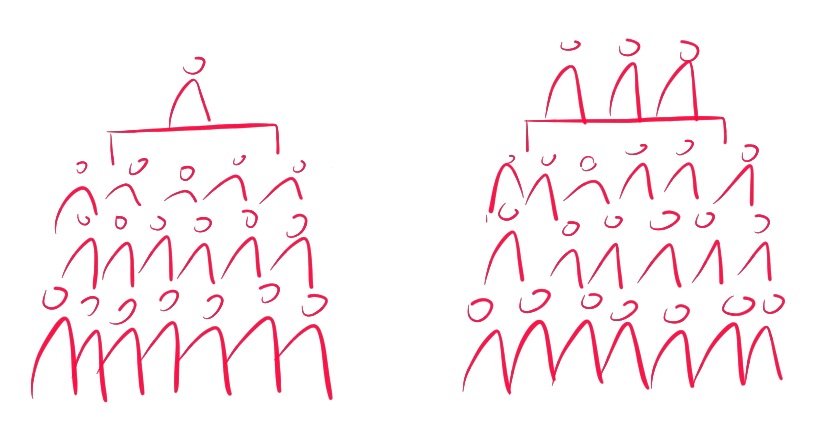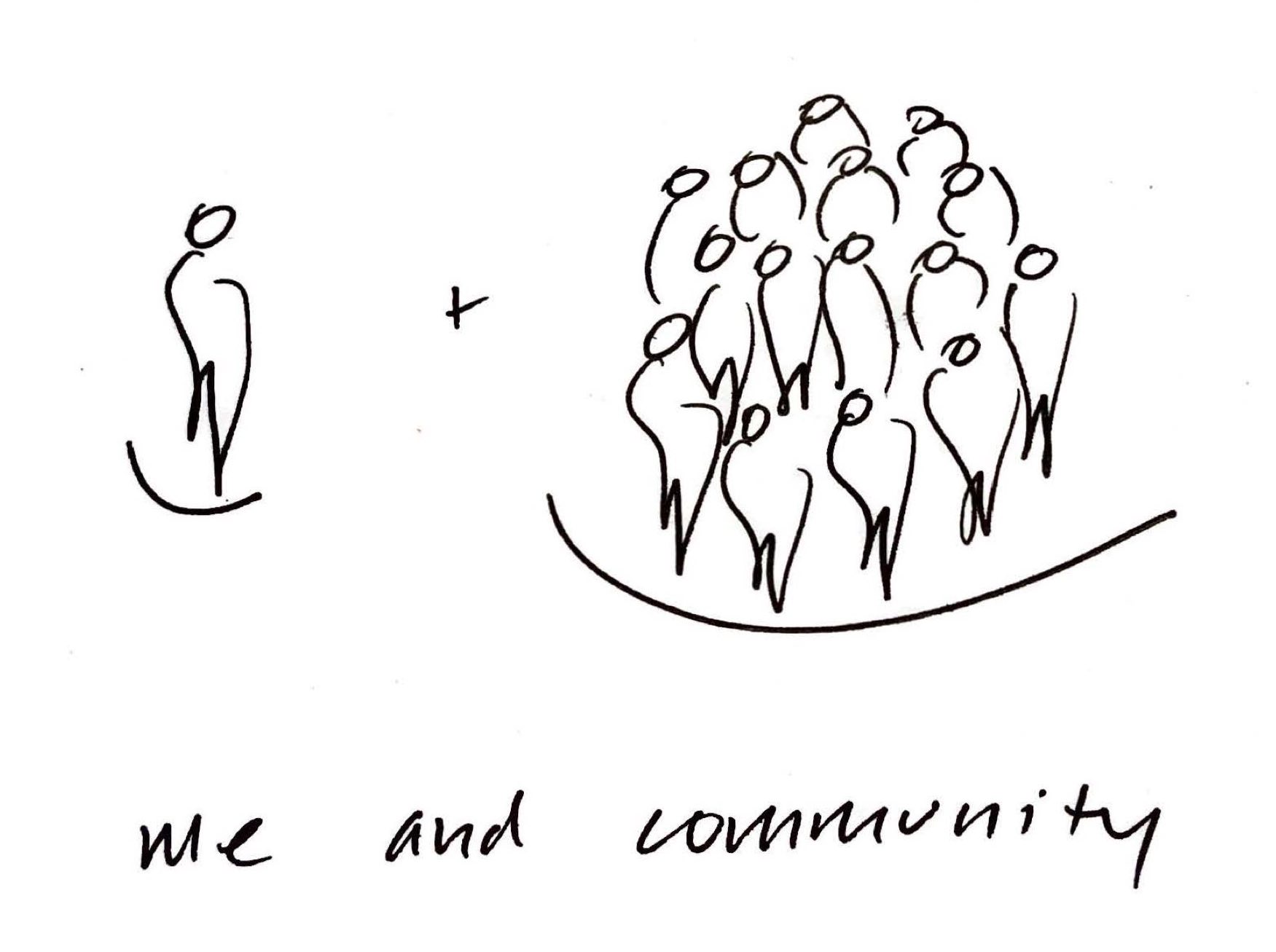I’ve been exploring a vital question for years, in anticipation of publication of my book, Nest City: how do I share my thinking and my work while being in community with my audience, especially when we are face-to-face?
We seem to think that when one or a few people talk to a crowd about community that we are learning about community. We are not.
The question comes from long-standing ‘antibodies’ in my citizen-system (me) to the dominant learning pattern of the expert on the stage, separate from the audience. (There’s a time and a place for this, but we are not good at discerning when it is right on right circumstances for the sage on the stage; it is our default shape when we gather in groups.) I get itchy when we seem to think that when one or a few people talk to a crowd about community that we are learning about community. We are not. 
A gathering in this shape–even if the subject matter is community–is not about community. It allows us to see, or visualize, a community of shared interest, but it is not about creating community. In this shape we are talking about community but not doing community, let alone making community. If the purpose of the gathering is about community we would get to know each other; the community would get to know itself. If I leave a gathering having seen the faces of people who share my interests, but nothing else, then it was not about community. If I leave knowing names, knowing a bit (or a lot) about others, shared a bit (or a lot) about myself, found some new ideas together with others and thread some of those ideas together, then the gathering was about making community. Being in the same room, even if we are talking about community, is insufficient to claim that we are learning about community.
I have no desire to be in learning spaces that claim to be about community when they are not.
So when I find myself in teaching situations I put pressure on myself to create the seed conditions for community. This means I have a shift to make in my approach, as well as name the shift to the people with whom I am creating the learning habitat. The shift I must make is simple: from “me and community” to “me in community”.
The shift I must make is simple: from “me and community” to “me in community”.
Me-and-community means I keep myself removed and separate from the community and it’s learning experience. 
Me-in-community means I am embedded in the learning system.  Here is the big difference between the two: separate learning journeys to interconnected learning journeys. Not only are participants connected to each other in their learning journeys, but my own learning journey is intertwined with theirs. We are not separate. We are in the learning together.
Here is the big difference between the two: separate learning journeys to interconnected learning journeys. Not only are participants connected to each other in their learning journeys, but my own learning journey is intertwined with theirs. We are not separate. We are in the learning together.
This shift involves growing into new expectations of each other, new foundational assumptions about our learning habitat. For example, when I show up as the expert, what we are all thinking I will do is speak uninterrupted for a long time and lay out what I think. If we are at a conference, I speak for 30 or 60 minutes and then I get off the stage. There may or may not be opportunity for a token exchange between you and I in the form of some questions and answers. Further, I may well leave right after my presentation. Whether I physically depart or not, I leave it to you to figure out what you think about what I’ve said by yourselves. (And you are left, also, to figure it out individually, not as a group: by your selfs.) A community-focused way of learning involves contrasting basic expectation: I share what I see and sense, and then we figure out what it means to us.
A community-focused way of learning involves contrasting basic expectation: I share what I see and sense, and then we figure out what it means to us. 
I do not leave you, rather I stay and explore with you. I might have a different role than you in the conversation that ensues, because I have a different experience, but I am in it with you. I do not drop a content bomb and run. I may have a role in holding space as the group discerns what it means for individuals, for the group, and any larger implications. I may jump in and participate with you while another holds space for us. The point: all of the perspectives in the room, all of the expertise, is allowed and invited to mix.
When we learn only from “the expert” there are massive an unimaginable missed opportunities. This is what you can expect of me: an expectation that unimaginable possibilities happen when we set ourselves up to learn together, rather than alone.
You might also like the “how much of me” series, that gets into the power dynamics of hosts and participants, and what we expect of each other:
- Host-attractor / host-on-the-rim – about the how dynamics shift when the host of a gathering is the reason why people are there, compared to when the expectations of the host (by host and participants) are more relaxed.
- Roles and challenges for the host-attractor and host-on-the-rim – a bit more about what we can expect of each other, as participants and hosts in these two different dynamics.
- 8 strategies to navigate power patterns – some ways to notice and handle the power dynamics that surface in conversation.
- Shifting to host-as-all-of-us – about how hosting a city in conversation with itself requires hosts and participants to shift into a new way of being.
- This post — Teaching from “me-in-community” — is an exploration of how to shift into host-as-all-of-us.
This post first published in Nest City News, September 3, 2019.
